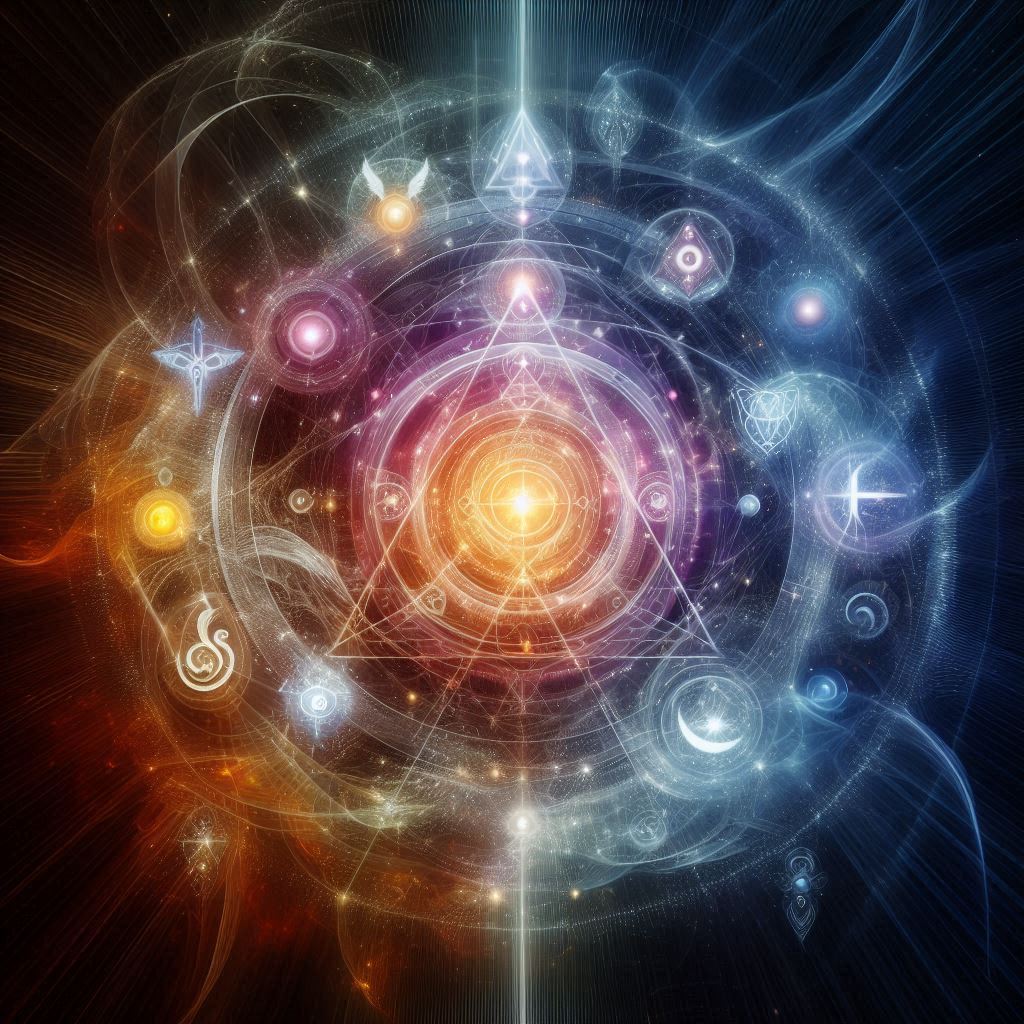Rethinking Divine Interpretations and Pursuits
Rethinking Good Lives and God
Humanists and various other advocates espouse the idea of leading a fulfilling, morally upright life without the necessity of belief in a divine being. They argue that wisdom and productivity can be achieved through human efforts alone. They emphasise reason, compassion, and self-improvement as the drivers of a fulfilling life. However, individuals who live without cultivating a relationship with a higher power may ultimately experience a sense of isolation and emptiness as they approach death.
Furthermore, if one subscribes to the belief in God, one would contemplate the various aspects of the divine, including God’s manifestations, activities, and celestial abode. Just as humans possess physical form, worldly pleasures, and a place of residence, it is reasoned that God, too, must possess analogous attributes, albeit in a transcendent, non-material form.
The Many Faces of God:
In contemporary times, the concept of God is subject to diverse interpretations, with individuals attributing varied meanings to the term. Throughout history, society has acknowledged numerous notable figures as divine beings. However, the designation of someone as God carries multifaceted implications. These interpretations frequently diverge significantly, reflecting contrasting perspectives on the nature of divinity. Consequently, our understanding of God often stands in stark contrast to the perceptions held by others.
The concept of God is a source of great debate. People define it in vastly different ways, sometimes even contradicting each other. Historically, some cultures have even elevated great figures to the status of gods.
What Does “God” Really Mean?
This raises the question: What are we truly trying to convey when we say someone is God? Is it about ultimate power, wisdom, or goodness? Our personal ideas about God can differ greatly from those around us.
Lord Prannath’s Path to Divine Truth: Beyond the Perishable and Imperishable:
Lord Prannath’s profound wisdom empowers seekers to discover the true nature of the One Supreme Truth God. This God is the embodiment of Truth, consciousness, and bliss. Lord Prannath emphasises that this One Supreme Truth God is “Aksharateet,” meaning beyond both the perishable (Kshar Brahman) and the imperishable (Akshar Brahman) realms.
Unity in Diversity: Universal Truth
Lord Prannath’s teachings bridge religious divides. He identifies the One Supreme Truth God as the Par-Brahman of Hindus, Allah the Almighty of Muslims, and the Supreme Truth God of Christians.Through revealed knowledge of Para Shakti (transcendental wisdom), Lord Prannath’s teachings help us:
Identify the True Form (Swaroop): This refers to God’s true essence beyond any physical form we imagine.
Understand the True Sports (Lila) of Bliss: This describes God’s divine activities, not as mere entertainment but as expressions of God’s blissful nature.
Appreciate the Beauty of the Supreme Abode (Paramdham): This refers to the ultimate reality, God’s dwelling place, which transcends our material world.
Unveiling the “Aham Brahmasmi” Saying: Beyond Duality
The Vedic statement “aham brahma asmi” (“I am Brahman”) is a profound concept often misunderstood. Let’s break it down:
Literal vs. Figurative:
Literal Interpretation: Taking it literally might suggest a seeker becomes God itself. This isn’t the intended meaning.
Figurative Interpretation: It’s a metaphor for realising the oneness of your inner Self (Atman) with the ultimate reality (Brahman). You don’t become God but recognise the divine spark within you.
Self-Worship vs. God Within:
Self-Worship: The statement doesn’t promote worshipping yourself.
God Within: It emphasises recognising the divine essence within all beings.
Is There a God “Outside”?
This great statement doesn’t negate the existence of a higher power outside yourself. Brahman can be understood as intrinsic (present within) and transcendent (existing beyond) reality.
Prannathji’s Perspective:
Prannathji critiques a narrow interpretation focusing solely on the “God within.” He suggests the scriptures acknowledge various levels of divine beings:
Jeeva: The individual soul in the material world.
Kshar Purusha or Creator God: The divine force behind creation.
Akshar Brahmn: A higher level of divine existence.
Supreme Brahman: The ultimate Truth, consciousness, and bliss.
Defining God:
Our understanding of God should consider the following:
Individual Self: Our spiritual potential.
Universe: The vastness of creation.
Creator: The source of all existence.
Supreme Brahman: The ultimate reality.
Ego and Idealised Self:
While aspiring to an ideal self is good, focusing solely on that ideal can lead to ego inflation.
Key Points:
- “Aham Brahmasmi” signifies the unity of the inner Self with the ultimate reality.
- It doesn’t promote self-worship but recognises the Divine within all.
- The concept of God encompasses various levels, including a Supreme Brahman.





